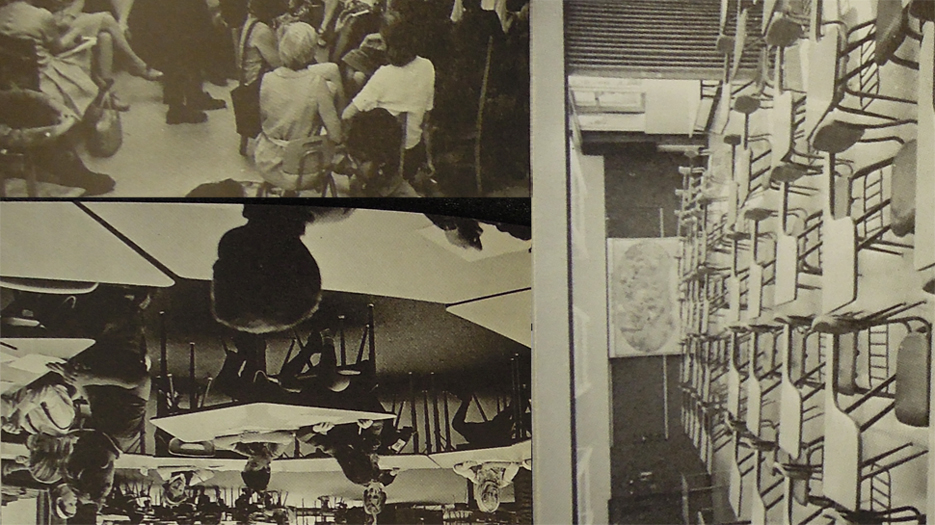The Floating Head Does Not Want to Command Us
A Skyped-in presentation is a strange experience because the person speaking—in this case Jakob Jakobsen of the Copenhagen Free University—appears as a giant head in front of the audience, and the audience as an anonymous crowd, in this case back-lit and merely a silhouette with no distinguishable features. It must have been strange for him, to talk to a group of individuals whose faces he could not discern, aside from, possibly, Amish Morrell who moderated the discussion and sat closer to the computer camera.
The Saturday Skype-in, presented as one of the final events associated with Vesna Krstich’s curatorial residency, Back to School, consisted of a series of questions posed mainly by Morrell and answered by Jakobsen all about CFU, a self-organized, free, collaborative, research institution run out of a domestic space in Copenhagen between approximately 1999 and 2005.
Jakobsen spoke at length about institutions. Interestingly enough, he did not really talk about what CFU researched—it seemed to not even be significant. His focus in the conversation was on the inheritance of institutions and the seeming rigidity of those institutions, on taking power and building an institution, on removing the idea of neutrality from an institution, and on his more recent interest in de-institutionalization (in taking institutions apart). The institution CFU concentrated on was, of course, the university, which makes sense since CFU conducted research at a level attractive to someone who already had a university-level of knowledge and frame of reference. Jakobsen told us they were interested in exploring what a university could be.
Within its structure of collective investigation, CFU had no assigned roles of teacher or professor. Jakobsen spoke of his dislike of teaching, his resistance to pedagogy, because of its inherent hierarchical relationships. I understand Jakobsen’s discomfort with the idea of being a teacher. The role carries baggage—the presentation of authoritative knowledge. Teachers know the answers. Teachers know more than their students. Teachers are in control and demand compliance. However, the meaning of the word teacher, just like that of the word institution, can be challenged. Consider the paragraph above with “teacher” and the idea of what a teacher is inserted in place of “institution”.
Power/Chairs
At the end of the Saturday Skype-in, someone asked about power positions and how Jakobsen dealt with power in the context of CFU. Jakobsen responded to the question with embarrassment over the set-up of the Skype-in: he’d been talking ninety percent of the time and the chairs, arranged uniformly in rows, appeared very institutional and to fulfill the curriculum of having us sit passively listening to him, much like students before their teacher. In his discomfort, Jakobsen suggested he go spend time with his daughter and asked us if we, the audience, instead of listening to him, would make a sculpture with the chairs, presumably to subvert the hierarchy in the room. We obeyed his wish, which was funny since our compliance confirmed any possible power he possessed over us.
In this moment, I felt both amused and discomfited. I had been content to sit and listen to Jacobsen, as I was curious to know more about CFU. My desire and willingness to attend the Skype-in and devote my attention to Jakobsen was not problematic to me, and, although his geographic distance from TPW limited the way we would interact. the situation made him uneasy, but not me.
The chairs were a focal point for Jakobsen. Why were they so important to him? What would reconfiguring them—altering the space—do to the power dynamic between him and the audience?
In thinking back on Jakobsen’s chair request, I am reminded of something Clémentine Deliss said during an interview I conducted with her in 2011 about her international research project, Future Academy: “It has to be person-led just like any good institution is based on the people who run it and not on the building”. At the time I think I questioned this statement, wondering if a building or any other physical space could lead a group of people in a particular direction, toward or away from various approaches to collaborating with each other. I wish there had been time to ask Jakobsen about this. Does an institution begin with a space or with people?

